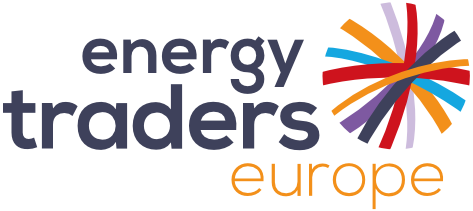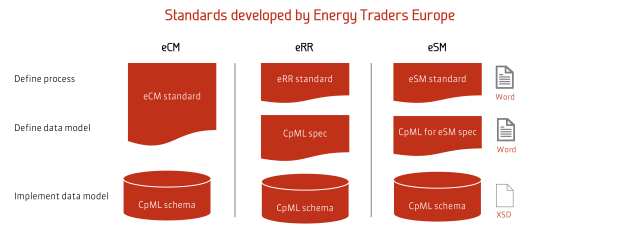
Maintaining Specifications Across Several Industry Standards for Energy Traders Europe
Management summary
On the occasion of its 25th anniversary, the European Federation of Energy Traders (EFET) was rebranded as Energy Traders Europe at the beginning of 2024. With now 150 members, the organization continues to develop and maintain contractual terms and data exchange standards for the energy trading industry.
Since 2016, parson has accompanied EFET on their standardization journey and now continues to support Energy Traders Europe with technical writing and data model development services. To mark the occasion, we’ll take a more detailed look at our cooperation.
Energy Traders Europe have worked with parson AG on our industry standards for many years. Over that time, we have found that they are not only easy to work with, but are very reliable, delivering high quality work on time.
Recently, we have been working closely with them to update our eRR standard for regulatory reporting, where they have provided excellent support. Working closely with them has also allowed us to bring our eSM standard sprint update cycle onto a regular, business as usual basis.
The parson team always brings their wealth of experience to help Energy Traders Europe deliver best practice in our standards development, and we look forward to further cooperation with them.
Technical writing and data modeling
Energy Traders Europe develops and maintains industry standards that enable customers in the energy trading industry to use common services for exchanging transaction data and fulfill regulatory requirements. The standards govern the following processes:
- Electronic Confirmation Matching (eCM): Matching the transaction data from the buyer to the transaction data from the seller
- Electronic Regulatory Reporting (eRR): Reporting transaction data to the relevant authorities, for example, under the EMIR and REMIT regulations in the EU
- Electronic Settlement Matching (eSM): Matching the invoice data from the buyer to the invoice data from the seller
All standards are based on a common XML vocabulary, the Commodity Product Markup Language (CpML). Because each standard requires a description of the underlying business transaction to some extent, it makes sense to use a common data model that uses the same base vocabulary to describe different aspects of these business transactions.
The following figure shows an overview of the different artifacts that govern each process:
What is special about standardizing a process and its data model?
In many ways, the standards developed by Energy Traders Europe are not different from other types of information products: Based on a clear description of the target audience and their informational needs, a suitable information architecture is defined. The main difference to other types of technical documentation is that we do not enable customers to use a specific product or service, but rather to develop a product or service that meets the requirements defined by the standard.
Understanding the stakeholders and the standardization process
Technical communicators are not usually trained in writing such specifications and developing data models. However, just like with any other information type, it is all about the target audience. We need to translate the requirements of the target audience into well-structured documentation that provides answers to the typical “W” questions:
- Who are the main stakeholders and actors in the process?
- Why do the process users need which information and why was the implementation done in a certain way?
- What is being standardized?
- How is the process being standardized?
Rather than having step-based instructions, this question leads to high-level process specifications and workflows.
To answer the questions, we need to understand the subject matter to a certain degree so that business requirements from subject matter experts can be converted to technical requirements in the standard.
The need for interoperability
An industry standard is born when multiple stakeholders from the same industry need to exchange, integrate, and/or compare data across different companies and services.
In their own environment, each company uses their own software products and data models to describe the same piece of information. Agreeing on a common process for the data exchange and a common data model provides the following benefits:
- Service providers can implement one service that connects multiple process users with different roles, for example, buyer, seller, or broker.
- Any company can implement one interface for each process that allows them to exchange data with multiple standardized service providers.
Creating effective industry standards
Interoperability is therefore a very important requirement. Regardless of the service provider and process user, XML documents are exchanged the same way, following the same rules. The specifications have to be as exact as possible and leave little to no room for interpretation. To achieve this, we focus on the following:
- Clear and consistent terminology, including terminology definitions
- Clear and consistent markup for different information types, for example, XML element names and values
- Clear usage of modal verbs to indicate the type of requirement and resulting obligation, in this case:
- “Must” and “is mandatory” or “must be omitted” for hard requirements
- “May” and “is optional” for optional requirements
- Clear and consistent indication of rules that apply to using the data model, for example:
- Conditions governing the presence of fields within an XML document. Example: If field ‘A’ is set to value “B”, then field ‘C’ is mandatory. Else, field ‘C’ must be omitted.
- Conditions governing the filling of a field within an XML document. Example: If field ‘A’ is set to value “B”, then field ‘C’ shall contain the value “D.”
- Not breaking backwards compatibility whenever possible. Changes have to be implemented in such a way that XML documents from a previous version of the standard can still be processed in the same way, allowing companies to catch up with newer versions according to their own schedules and abilities.
How we work
In the beginning of the cooperation, our task was mainly to reorganize and harmonize existing specifications for better understandability and consistency.
Over the years, our experience with the subject matter has continually grown and so our tasks have gradually expanded. parson now supports Energy Traders Europe with tasks such as the following:
- Make proposals for translating business requirements from the working groups into updates to the data model.
- Update the data model specifications and the XML schemas based on those proposals after review by the corresponding working groups.
- Ensure that changes to the data model do not have negative side effects, such as other affected data structures or backward-incompatible changes. Wherever possible, employ the same types and specifications across different standards.
- Ensure that changes are applied consistently across different processes, where applicable.
- Prepare Word documents and XML schemas for release. Ensure that all changes in a version are properly tracked and documented.
About Energy Traders Europe
Energy Traders Europe is the voice of Europe’s energy traders. The organization represents 160 member companies from across the continent, working to promote the role of energy traders in the European energy market.

